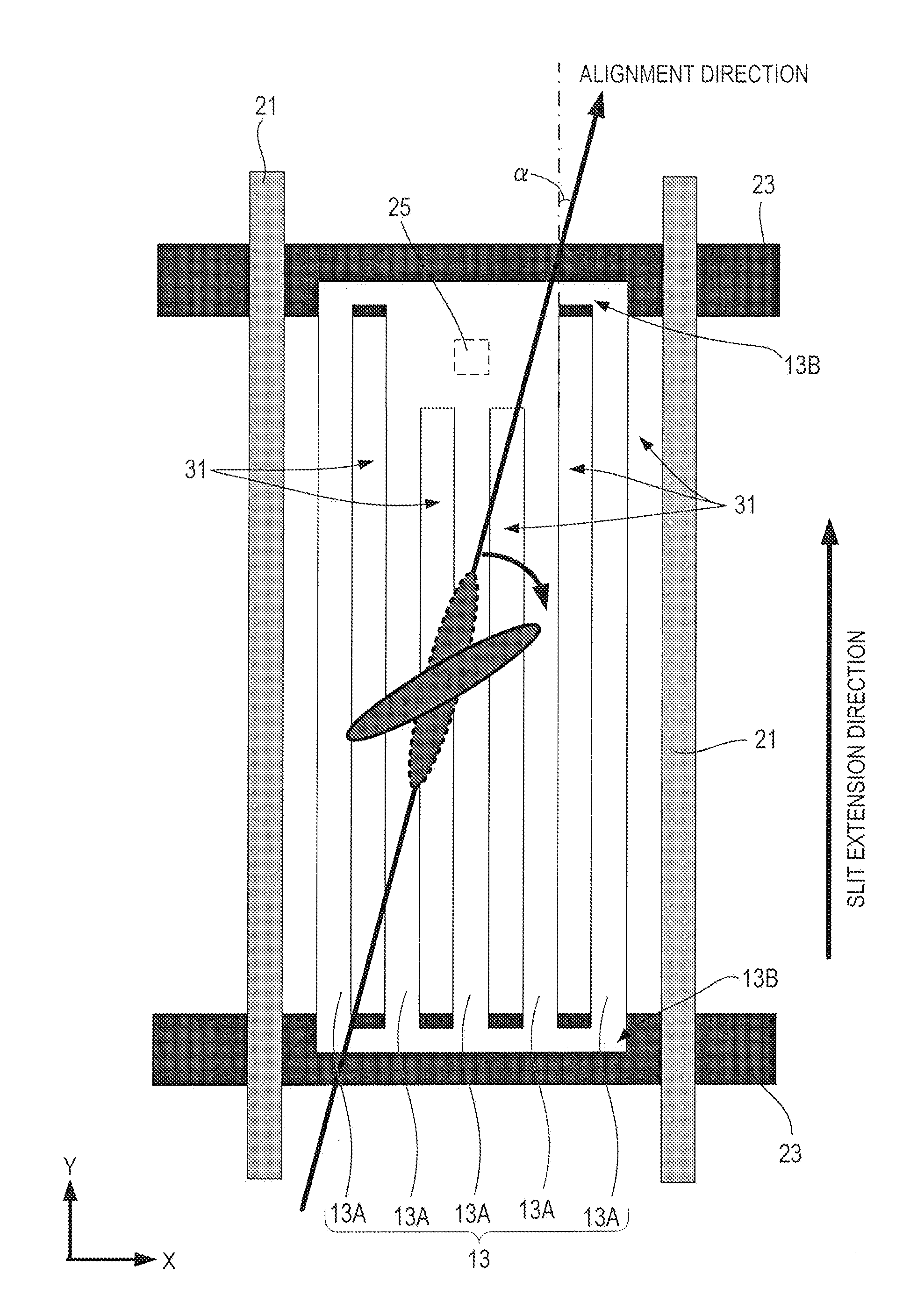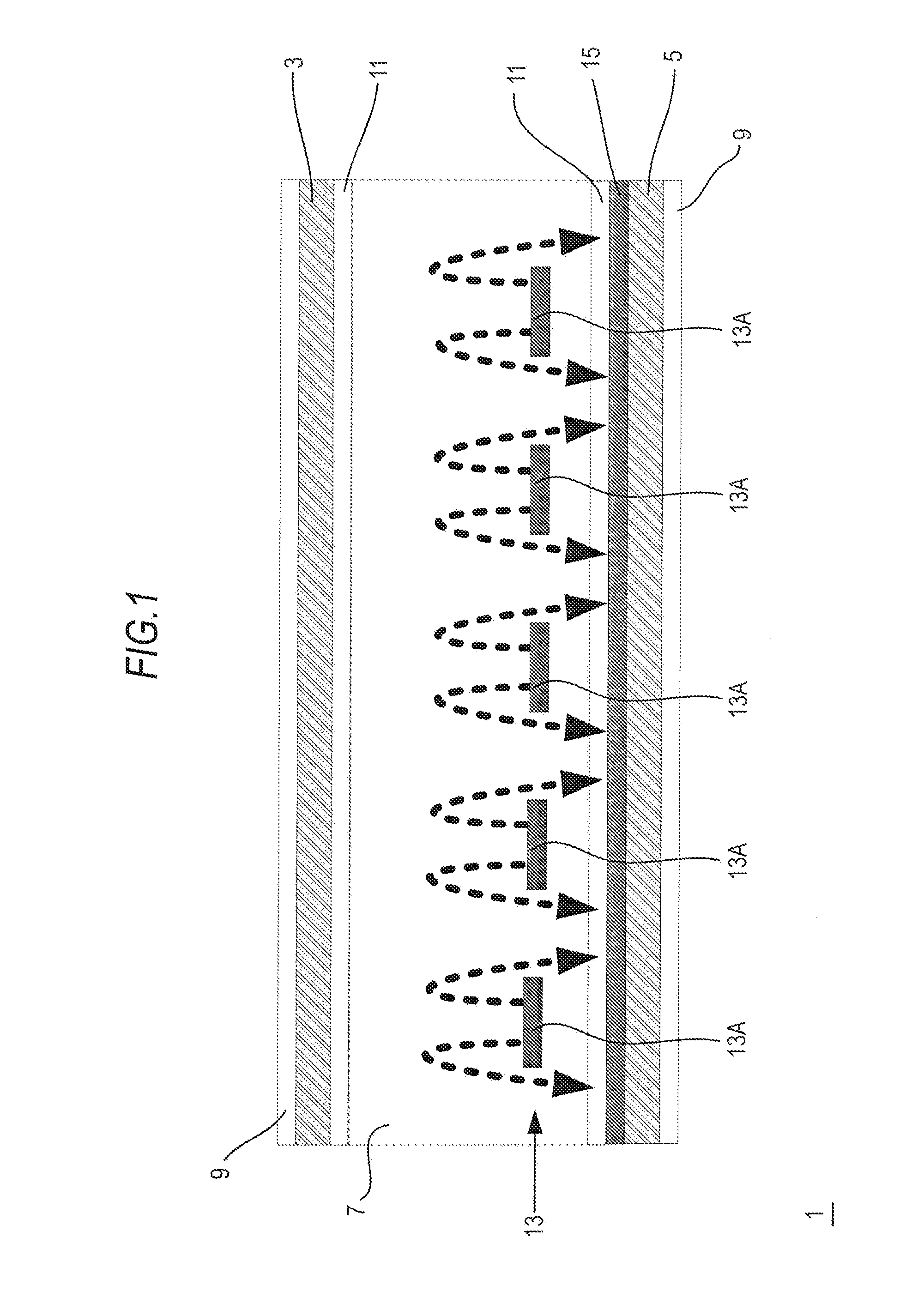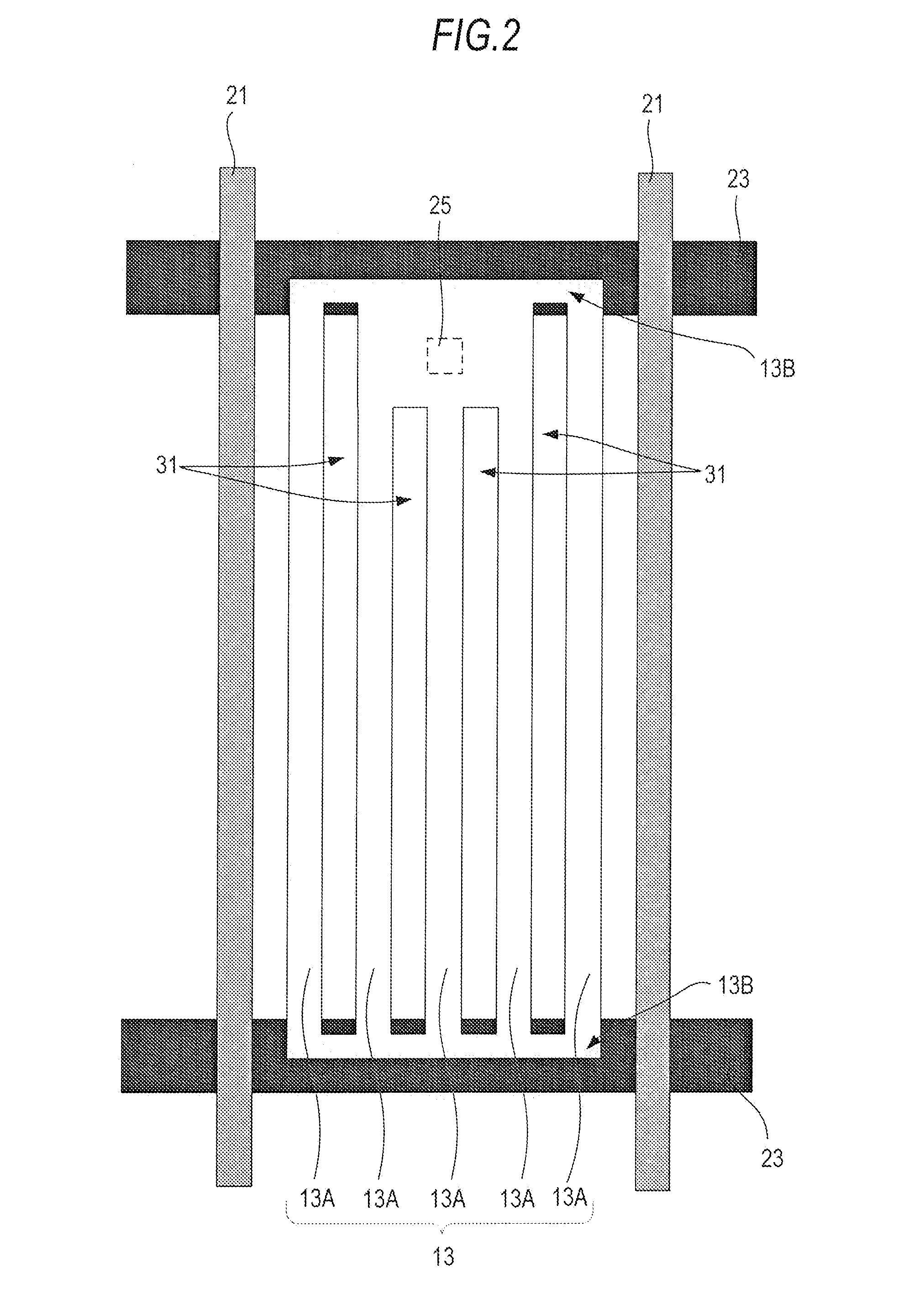Liquid crystal panel and electronic apparatus
a technology of electronic equipment and liquid crystal panels, applied in static indicating devices, instruments, non-linear optics, etc., can solve the problems of rapid disappearance of alignment disturbance and non-restored original state, and achieve the effect of reducing transmittance, increasing alignment stability during voltage application, and rapidly disappearing alignment disturban
- Summary
- Abstract
- Description
- Claims
- Application Information
AI Technical Summary
Benefits of technology
Problems solved by technology
Method used
Image
Examples
example 1
(C) Pixel Structure Example 1
[0116]The pixel structure shown in FIG. 16 is identical to the pixel structure described with reference to FIG. 12 or 13 and supposes an FFS (Fringe Field Switching) type liquid crystal panel.
[0117]Thus, the sectional structure of the pixel region is as shown in FIG. 1. That is, the counter electrode 15 is disposed below the pixel electrode 13 so as to cover the entire pixel region.
[0118]Like FIG. 12 or 13, the pixel structure shown in FIG. 16 is a pixel structure in which one bend point is provided. The bend point is provided around the contact 25. In FIG. 16, the area of the bent region is enlarged for ease of understanding of the extension direction of the slit 31 extending from the bend point toward the contact 25.
[0119]In FIG. 16, the extension direction of a slit 31 formed near the center of the pixel region from the bend point is parallel to the signal line 21. The extension direction of the slit 31 extending from the bend point toward the contact...
example 2
(D) Pixel Structure Example 2
[0125]FIG. 17 shows a second pixel structure example. This pixel structure also supposes an FFS (Fringe Field Switching) type liquid crystal panel.
[0126]In FIG. 17, the cross angle α2 between the extension direction of each slit 31 formed in the pixel region excluding the bent region and the alignment direction of the liquid crystal layer 7 is equal to or larger than 7°. The cross angle α1 between the extension direction of each slit 31 formed in the bent region and the alignment direction of the liquid crystal layer 7 is equal to or larger than the above-described cross angle α2.
[0127]In this pixel structure, the cross angle α1 between the extension direction of each slit 31 corresponding to the bent region and the alignment direction of the liquid crystal layer 7 can be set to be equal to or larger than 7°, so as in the pixel structure example 1, the alignment stability can be increased and disclination growth can be suppressed.
[0128]In this pixel stru...
example 3
(E) Pixel Structure Example 3
[0130]FIG. 18 shows a third pixel structure example. This pixel structure also supposes an FFS liquid crystal panel.
[0131]This pixel structure is also identical to the above-described two pixel structures, and corresponds to a pixel structure example with a single domain structure. This pixel structure example has a feature that two bend points (bent regions) are provided. Specifically, a second bend point is provided around the connection portion 13B on the side opposite to the contact 25.
[0132]This is to increase the alignment regulation force around both ends of the electrode branches 13A so as to shorten the time until a reverse twist line disappears. Of course, in this pixel structure, disclination which occurs at the end portions of the electrode branches 13A on the side opposite to the contact 25 can also be suppressed.
[0133]In the pixel structure example of FIG. 18, the positions of the bend points and the bend directions are set to be mirror-sym...
PUM
| Property | Measurement | Unit |
|---|---|---|
| angle | aaaaa | aaaaa |
| angle | aaaaa | aaaaa |
| angle | aaaaa | aaaaa |
Abstract
Description
Claims
Application Information
 Login to View More
Login to View More - R&D
- Intellectual Property
- Life Sciences
- Materials
- Tech Scout
- Unparalleled Data Quality
- Higher Quality Content
- 60% Fewer Hallucinations
Browse by: Latest US Patents, China's latest patents, Technical Efficacy Thesaurus, Application Domain, Technology Topic, Popular Technical Reports.
© 2025 PatSnap. All rights reserved.Legal|Privacy policy|Modern Slavery Act Transparency Statement|Sitemap|About US| Contact US: help@patsnap.com



